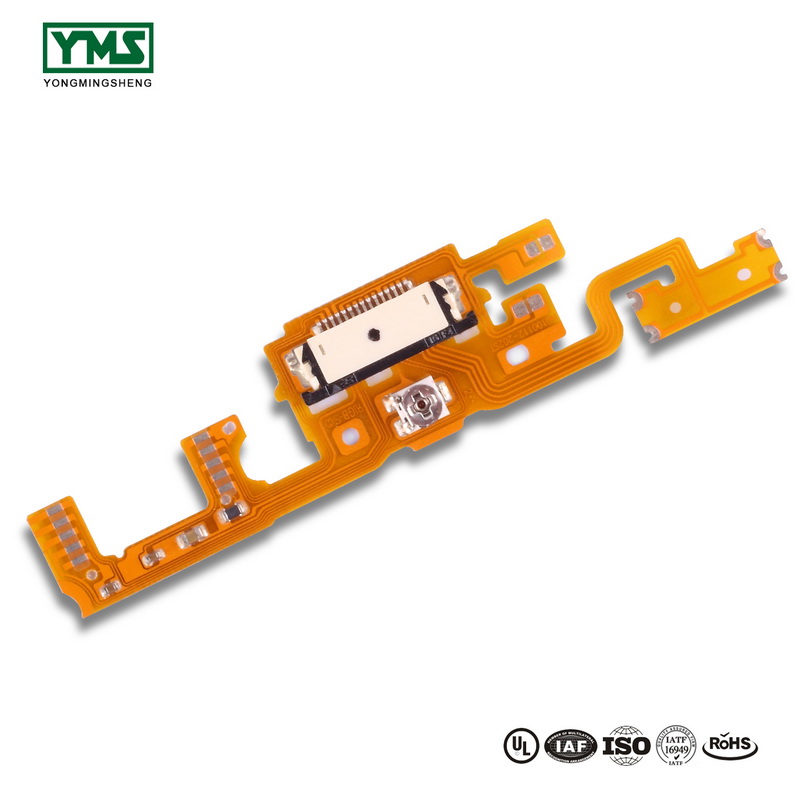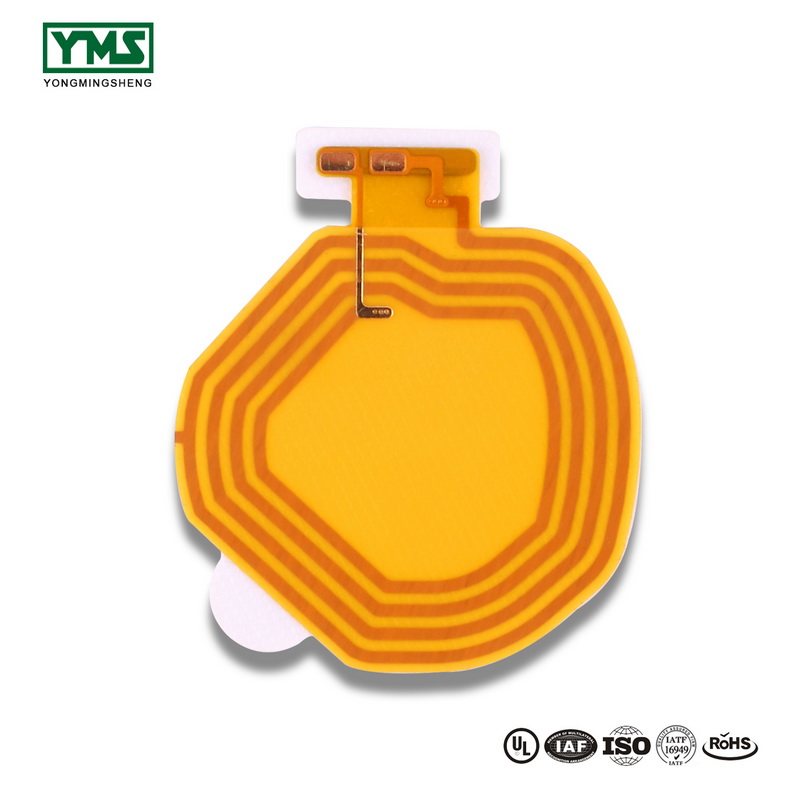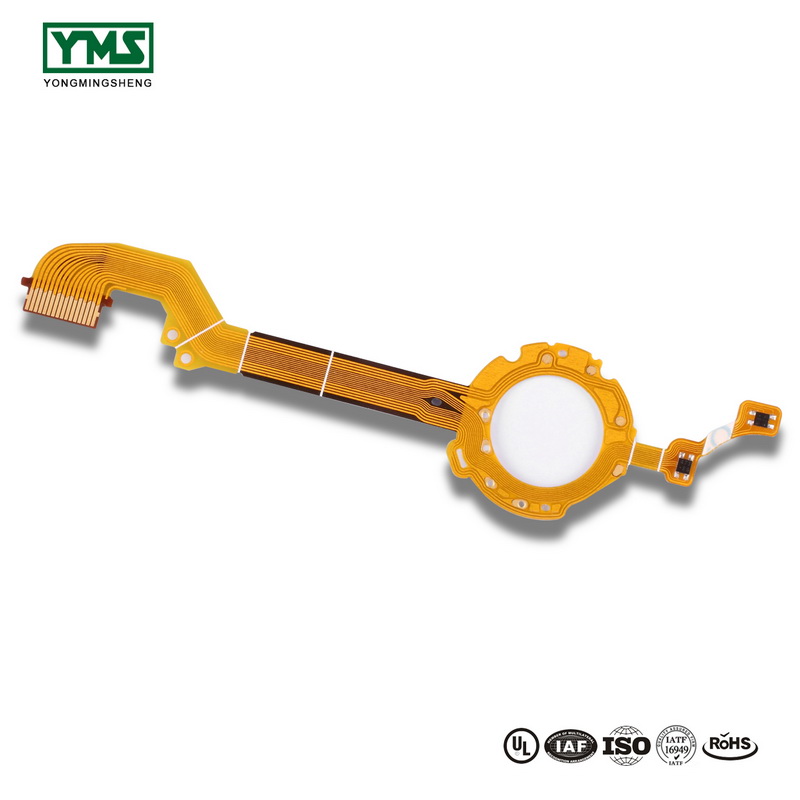1.Flexibility and reliability of FPC flexible circuit board
At present, FPC has: single – layer, double – layer, multi – layer flexible board and Flex-Rigid board.
(1) single-layer flexible board is the lowest cost and the electrical performance requirements are not high.
Single - layer flexible board should be used for single – sided wiring.It has a conductive pattern etched by chemical etching, and the conductive pattern layer on the flexible insulating substrate surface is calendered copper foil.Insulation substrates may be polyimide, polyethylene terephthalate, aromatic amide fibre ester, and polyvinyl chloride.
(2) double-layer flexible board is a conductive pattern etched on both sides of the insulation base film.Metallized holes connect the figures of the two sides of the insulation material to form a conductive path to meet the design and use of flexural function.
The covering film protects the single and double wires and indicates where the element is placed.
(3) multi-layer flexible board laminates three or more layers of single or double-layer flexible circuit, through drilling, plating, forming metallized hole, and forming conductive path between different layers.
This eliminates the need for complex welding processes.Multilayer circuits have huge functional differences in terms of higher reliability, better thermal conductivity and easier assembly performance.The mutual influence of assembly size, number of layers and flexibility should be considered when designing the layout.
(4) the traditional Flex-Rigid board is composed of rigid and flexible board with selective layer pressure together.The structure is compact, metallized to form an conductive connection.
If a printed board has elements on both sides, Flex-Rigid board is a good choice.But if all the components are on one side, it would be more economical to use a double-sided flexible board and laminate a layer of FR4 stiffener material on the back.
(5) hybrid structure of flexible circuit is a multilayer, conductive layer by different metal composition.
An 8-ply board uses fr-4 as the medium for the inner layer and polyimide as the medium for the outer layer, with leads extending from three different directions of the main board, each of which is made of a different metal.Constantan, copper and gold lead separately.
This kind of hybrid structure is mostly used in the relationship between electrical signal conversion and heat conversion and in the case of low temperature with harsh electrical properties, which is the only feasible solution.
It can be evaluated by the convenience of internal connection design and the total cost to achieve the best performance ratio.
2.FPC flexible circuit board economy
If the circuit design is relatively simple, the total volume is not large, and the space is suitable, the traditional interconnect is much cheaper.If the circuit is complex, many signals are processed or special electrical or mechanical properties are required, flexible circuit is a good design choice.
Flexible assembly is most economical when the size and performance of the application exceeds the capacity of rigid circuits.A 12mil pad with 5mil through-hole and 3mil line and spacing flexible circuit can be made on a single film.
Therefore, it is more reliable to mount the chip directly on the thin film.Because does not contain the flame retardant which may be the ion drill sewage source.These films may be protective and solidify at higher temperatures, resulting in higher vitrification temperatures.
Flexible materials save costs compared with rigid materials by eliminating connectors.
The high cost of raw materials is the main reason for the high price of flexible circuits.The price of raw materials varies greatly. The cost of raw materials used in polyester flexible circuit is 1.5 times;High performance polyimide flexible circuits are up to 4 times higher.
At the same time, the flexibility of materials makes it difficult for them to be processed automatically in the manufacturing process, resulting in a decline in production.In the final assembly process, defects are prone to occur, including stripping of flexible accessories, line fracture.
This is more likely to happen when the design is not suitable for application.Under the high stress caused by bending or forming, it is often necessary to choose stiffener or stiffener materials.
Although the material cost is high and troublesome, the foldable, flexible and multi-layer panel function will reduce the size of the whole assembly, and the material used will be reduced accordingly, thus reducing the total assembly cost.
3.Cost of FPC flexible circuit board
Despite these cost factors, the price of flexible assembly is falling and becoming close to that of traditional rigid circuits.The main reasons are the introduction of newer materials, improved production processes and changed structures.The current structure makes the product more thermally stable, and there are few material mismatches.Some newer materials, thanks to thinner copper layers, can produce more precise lines, making components lighter and more suitable for small Spaces.
In the past, the rolling process was used to attach copper foil to the media coated with adhesive. Now, it is possible to directly produce copper foil on the media without using adhesive.These techniques can produce layers of copper several microns thick, resulting in 3m.1 precision lines even narrower in width.The flexible circuit has flame retardant property after removing some adhesive.
This speeds up the uL certification process and further reduces costs.Flexible circuit board solder mask and other surface coatings further reduce the cost of flexible assembly.
In the coming years, smaller, more complex and more expensive FPC flexible circuits will require novel methods of assembly and the addition of hybrid flexible circuits.
The challenge for the flexible circuit industry is to leverage its technological advantages to keep pace with computers, telecommunications, consumer demand, and active markets.In addition, flexible circuits will play an important role in lead-free operation.
Flex PCB Manufacturer
Huizhou Yongmingsheng Technology co., ltd. was founded in February 2011. After several years of growth, Shenzhen Yongmingsheng Technology co., ltd. and Hong Kong Yongmingsheng Technology co., ltd. were successively established.
Our enterprise is a high-tech enterprise which professional manufacture and sale high-precision single, double, multi-layer PCB, FPC, Flex-Rigid Board and aluminum substrate.Since
YMS was established, it has been committed to building the best quality and fastest delivery of PCB industry manufacturer.
And our company pay great attention to the cultivation of talents, advocates the idea of sharing, What’s more, we have a vigorous, professional and experienced technical production and management team who focus on PCB technology research and development, and strive to improve the company’s PCB professional level and production capacity.
Post time: Aug-24-2019



